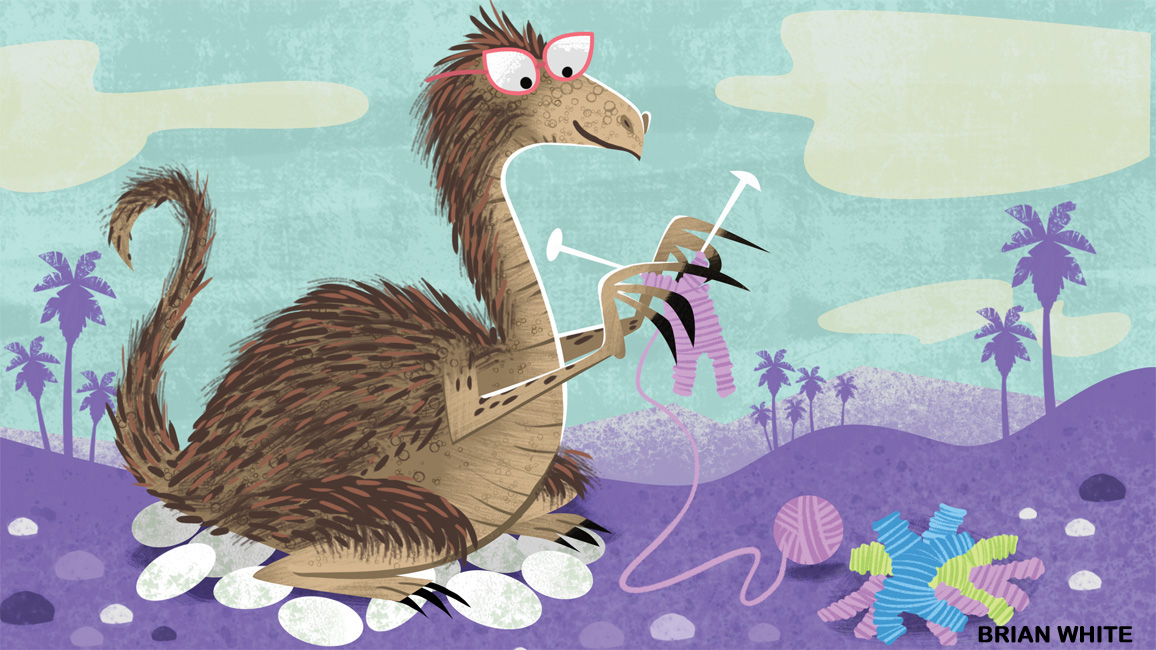
Dinosaur Trivia
By Kathy Kranking; Art by Brian WhiteDo you dig dinos? Here’s your chance to “bone up” on these amazing animals.

- About 1,500 species of dinosaurs have been discovered so far. And a new species is found almost every week!
- Fossils are the remains of living things that have turned to rock. Most fossils form when layers of earth build up on top of an animal or plant that has died. After millions of years, the layers—and everything in them—turn to stone. If you were a scientist who studies fossils, you would be called a paleontologist (pay-lee-uhn-TAHL-uh-jist).
- Fossils show that dinosaurs lived on all seven continents—even Antarctica.

- When people made early discoveries of dinosaur fossils hundreds of years ago, they thought they had found the bones of dragons.
- Bones aren’t the only fossils left behind by dinos. Scientists have found fossilized dinosaur skin, eggs, footprints, and even poop!
- Did you know you have living dinosaurs at your bird feeder? It’s true—birds are descendants of theropods, the same group of dinos that T. rex belonged to. But birds evolved from small theropods, not big ones such as T. rex.
- The biggest dinosaur footprint ever found is almost as long as a person is tall!
- Dinosaurs came in many different sizes, from bird-like ones smaller than ducks to giants longer than three school buses.

- Like bird eggs, dinosaur eggs came in different sizes, shapes, and colors. The smallest may have been only as wide as your thumbnail. The biggest may have been three times as long as an ostrich egg. Some were round; others were long ovals. And they came in colors such as blue-green and beige—some were even speckled.
- Some kinds of dinosaurs sat on nests and cared for their eggs.
- Many kinds of dinosaurs had colorful feathers. Some even had feathers that shimmered the way a hummingbird’s do.
- The jaws of a T. rex were strong enough to shatter bones. They crushed down with a force equal to the weight of three small cars! So T. rex was able to eat the flesh and bones of other animals. Scientists have even found pieces of bone in the stomachs of T. rex fossils.
















